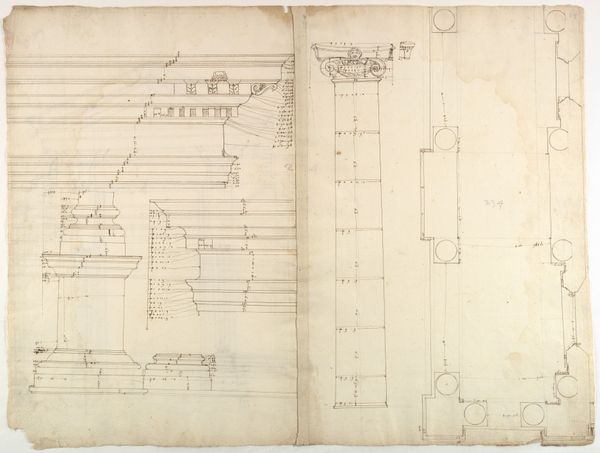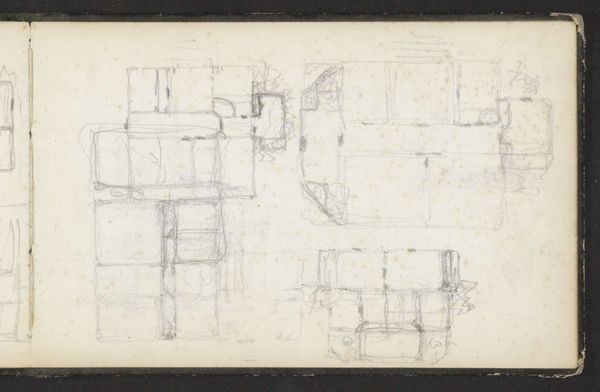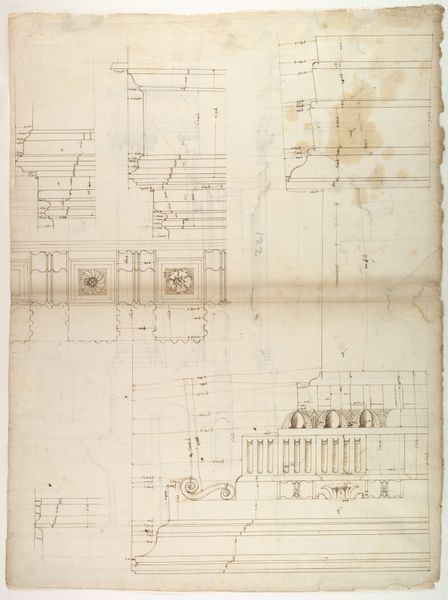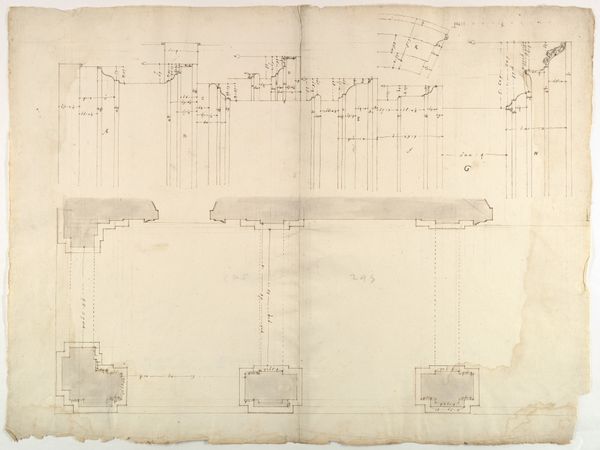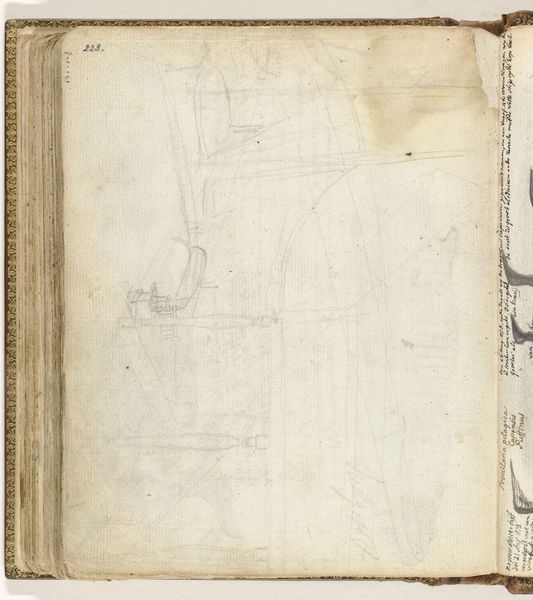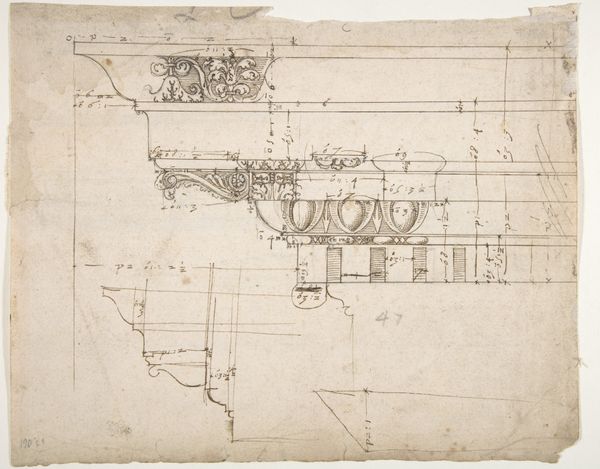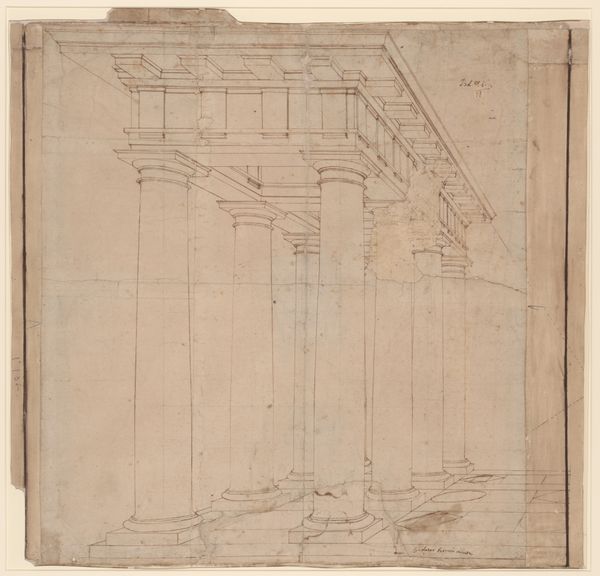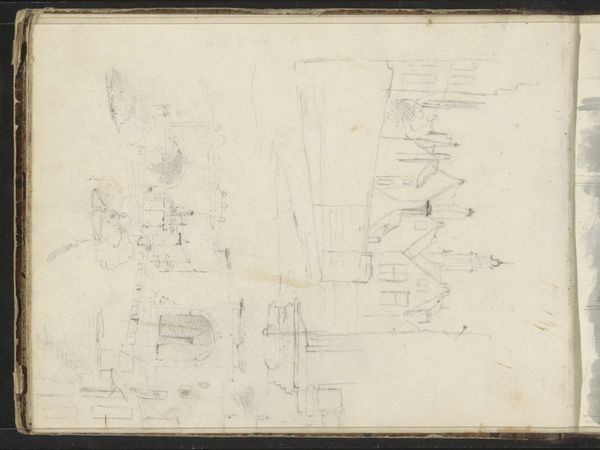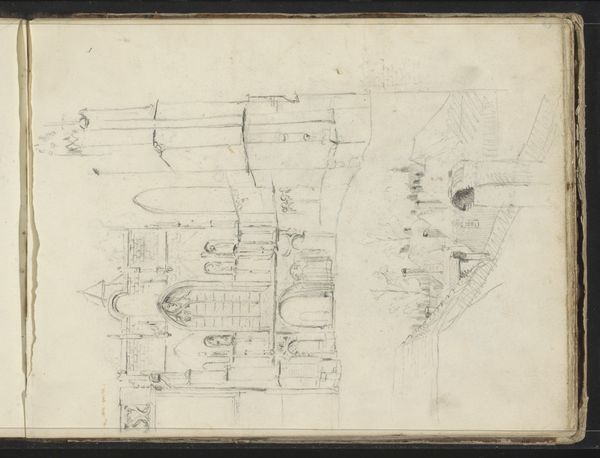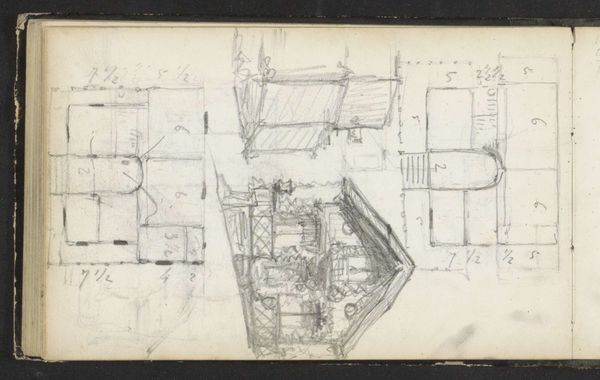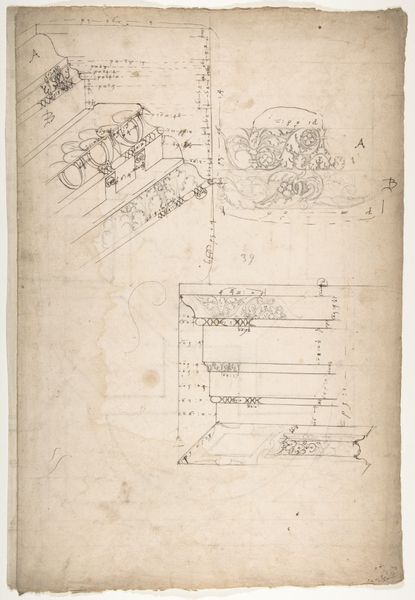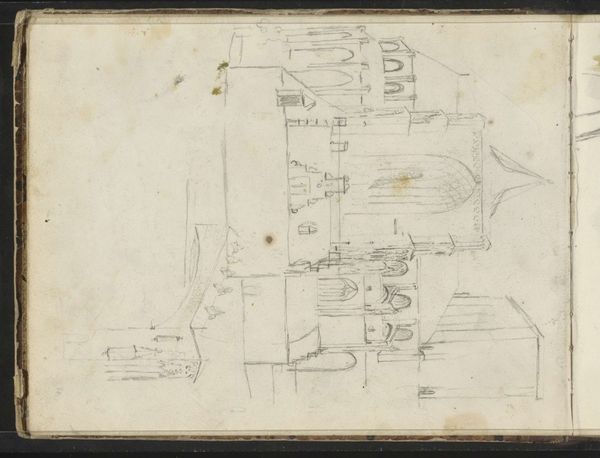
Palazzo dei Conservatori, portico, plan; portal, elevation; details, elevations (recto) Palazzo dei Conservatori, portico, elevation; details, profiles (verso) 1500 - 1560
0:00
0:00
drawing, print, ink, architecture
#
drawing
# print
#
ink
#
italian-renaissance
#
architecture
Dimensions: sheet: 13 9/16 x 18 7/8 in. (34.5 x 48 cm)
Copyright: Public Domain
Curator: Here we have architectural studies dating from between 1500 and 1560 by an anonymous Italian artist. This sheet includes a plan, elevation, and details for the Palazzo dei Conservatori’s portico and portal, showcasing both recto and verso sides of the paper. Editor: It’s incredibly detailed. Even though it’s a technical drawing, you can feel the hand of the maker – all those subtle variations in line weight speak volumes about the working process. Curator: Precisely. What strikes me is the representation of civic power through architecture in the Italian Renaissance. The Palazzo dei Conservatori was meant to project Roman authority, and this study provides valuable insight into its design. It's fascinating to consider this building within Rome’s complex socio-political landscape. Editor: And think about the sheer labor! Sourcing materials like marble and stone, the highly skilled stonecutters, and the logistics of getting all of this onto Capitoline Hill. It underscores how architecture, particularly projects on this scale, is deeply embedded in material realities and supply chains. Curator: Absolutely. And these drawings— likely one of many— allowed for review by committee, feedback, and subsequent refinements that impacted the final built structure that impacts Roman civic life to this very day. We can see a whole social infrastructure in this sheet of paper. Editor: We can also consider this drawing as a commodity in itself. How would this have been valued, circulated, and preserved? Drawings such as this acted as not only design tools but were key documents to be valued in architectural circles. Curator: Right! This connects it to a broader market of architectural ideas, influenced by earlier architects but tailored to Rome's political needs. Editor: Studying its creation— the paper, ink, the labor hours—forces us to look beyond just aesthetics and appreciate the whole material life of architecture. Curator: Considering this drawing, alongside historical documents from the period, allows us to better comprehend the complex dynamics of image production. Editor: I’m left with thinking of the human effort required to bring architectural concepts to life – connecting this single sheet to the lives and materials surrounding its creation.
Comments
No comments
Be the first to comment and join the conversation on the ultimate creative platform.
